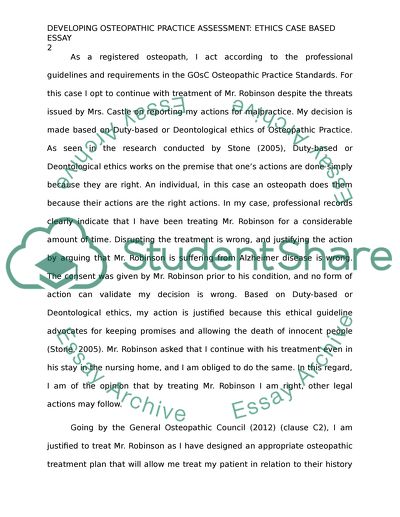Cite this document
(“Developing Osteopathic Practice Assessment: Ethics Case Based Essay”, n.d.)
Developing Osteopathic Practice Assessment: Ethics Case Based Essay. Retrieved from https://studentshare.org/health-sciences-medicine/1673574-developing-osteopathic-practice-assessment-ethics-case-based-essay
Developing Osteopathic Practice Assessment: Ethics Case Based Essay. Retrieved from https://studentshare.org/health-sciences-medicine/1673574-developing-osteopathic-practice-assessment-ethics-case-based-essay
(Developing Osteopathic Practice Assessment: Ethics Case Based Essay)
Developing Osteopathic Practice Assessment: Ethics Case Based Essay. https://studentshare.org/health-sciences-medicine/1673574-developing-osteopathic-practice-assessment-ethics-case-based-essay.
Developing Osteopathic Practice Assessment: Ethics Case Based Essay. https://studentshare.org/health-sciences-medicine/1673574-developing-osteopathic-practice-assessment-ethics-case-based-essay.
“Developing Osteopathic Practice Assessment: Ethics Case Based Essay”, n.d. https://studentshare.org/health-sciences-medicine/1673574-developing-osteopathic-practice-assessment-ethics-case-based-essay.


